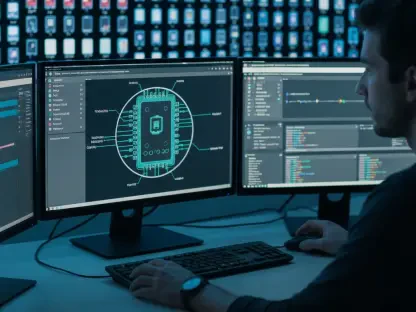In the ever-evolving world of marine technology, lithium-ion battery systems have emerged as critical components aboard many inspected vessels, driven by the pursuit of efficiency and sustainability. However, their integration into the maritime environment is not without significant challenges. A recent incident underscored these challenges when an overlooked connection in an integrated lithium-ion battery system led to a fire, highlighting potential hazards unique to these batteries. Such risks include high energy density, thermal runaway, and the emission of toxic gases, making their safe use a matter of paramount importance. To address these concerns, the U.S. Coast Guard mandates rigorous engineering plan reviews and comprehensive safety system installations, as well as testing and maintenance of lithium-ion systems across all vessel types and applications, ensuring that safety protocols are adhered to consistently.
Navigating Safety Protocols and Hazards
Lithium-ion batteries, with their impressive energy density and efficiency, offer significant advantages for vessels concerned with reducing emissions and optimizing space. Yet, the inherent risks cannot be overlooked. The U.S. Coast Guard has established a series of safety measures to be diligently followed. Critical among these is the need for ship-specific risk assessments that examine potential points of failure in critical systems. The Policy Letter CG-ENG 02-19 and ASTM F3353-19 guidelines provide detailed instructions concerning the installation of fire detection and suppression systems and adequate ventilation solutions on vessels using lithium-ion batteries, ensuring that any signs of malfunction or overheating are swiftly addressed before escalating into serious incidents. Given the complexity of these systems, expedited reviews are not an option, making early and thorough planning all the more crucial.
Undertaking failure analyses and implementing design verification test procedures form another layer of safety checks. Such measures are necessary to ascertain the robustness of battery systems under varied operational scenarios. As these systems undergo comprehensive testing, the focus is on anticipating potential hazards and mitigating them through sound engineering practices. This includes assessing the structural integrity of battery enclosures, setting protocols for emergency responses, and incorporating redundancies in system design to safeguard against unforeseen failures. The meticulous nature of these procedures underscores the serious commitment to safety while embracing the technological advancements lithium-ion batteries represent.
Crew Training and Maintenance Protocols
Operational safety extends beyond engineering to include robust training programs for crew members interacting with these advanced battery systems. Familiarity with manufacturer guidelines, understanding the intricacies of battery management systems, and effective handling of anomalies are all pivotal to maintaining safety aboard. Each crew member should be equipped to respond to abnormal battery conditions and potential fire scenarios to prevent situations from spiraling out of control. Comprehensive training covers a spectrum of emergencies, ensuring precise knowledge in identifying early signs of risk, including overheating or off-gassing.
For optimal lithium-ion battery performance, regular inspections and timely maintenance are vital. Identifying signs of wear, such as bulging or corrosion, enables proactive interventions to prevent degradation and maintain system efficacy. With lithium-ion systems often resembling their lead-acid counterparts in appearance, the importance of understanding different battery chemistries—like LFP, NMC, and NCA—is emphasized; this knowledge helps in reading specifications accurately to differentiate and service these batteries correctly. The U.S. Coast Guard stresses the significance of conducting plan reviews and design tests early during the construction phases, ensuring any design flaws are addressed well before the vessel becomes operational. By embracing a proactive approach to maintenance, the long-term reliability and safety of lithium-ion battery systems can be assured.
Striving for Informed Practices
Lithium-ion batteries present impressive energy density and efficiency advantages, especially for ships aiming to minimize emissions and maximize space. Nevertheless, inherent risks can’t be ignored. The U.S. Coast Guard has outlined specific safety measures that must be strictly adhered to. Key among these is the necessity for vessel-specific risk assessments focusing on possible failure points in crucial systems. Policy Letter CG-ENG 02-19 and ASTM F3353-19 guidelines deliver extensive directives about installing fire detection and suppression systems, along with suitable ventilation solutions, to address malfunctions or overheating before they escalate. Due to these systems’ complexity, expedited reviews aren’t viable, emphasizing early and comprehensive planning.
Conducting failure analyses and implementing design verification tests add another layer to safety measures, certifying battery systems’ sturdiness under varied conditions. Comprehensive testing aims to predict and mitigate hazards using sound engineering practices, including evaluating battery enclosure integrity, establishing emergency response protocols, and integrating redundancies to protect against unexpected failures. These procedures highlight the serious commitment to safety while advancing with lithium-ion battery technology.









